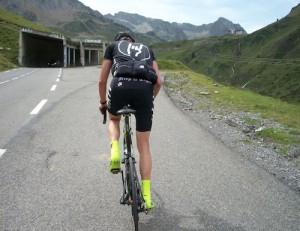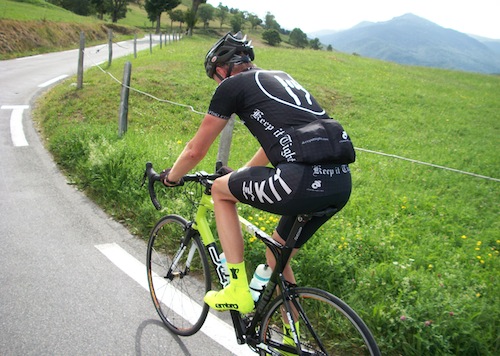By Dave Andersen
 How can you improve you ask? You want to run faster and further, you want to beat your cycling competitors up that climb?
How can you improve you ask? You want to run faster and further, you want to beat your cycling competitors up that climb?
I’ve been closely involved in running and cycling for over 35 years and I can say the tried and true training methods have basically remained the same this past generation. Sure, a huge amount of scientific data is available on the benefits of training at altitude and on new forms of strength and flexibility training. And with today’s gadgets you can now quantify every aspect of training from mapping your routes, graphing your power, heart rate, Vo2 max and all that. But lest we forget that training for the purpose of racing is not rocket science. Machines can measure things, but what they don’t measure is how much pain you can SUFFER. And that, my friends, in addition to hard training and experience, may be the one of the most important aspects of racing.
Training is key! And it’s certainly helpful to get your body fat percentage into the single digits. The most important aspects of endurance training are PATIENCE and CONSISTENCY. These things are not glamorous. They don’t fit in particularly well in today’s society. There is no quick fix and no immediate gratification. But there is satisfaction in doing something to the best of your ability and with conviction. There is solace in repeating a simple activity until it becomes smooth, efficient and, of course, faster.
Books, magazines and internet articles on sporting success often refer to the fact that the MIND usually gives up before the body during prolonged periods of intensity within competition. This is likely true. What makes some willing to suffer more? Perhaps the hardships of life are very often the cornerstones of success later on. Interval training strengthens the body but perhaps it’s the really crappy day at work or the time spent forcing yourself to do the things you fear that give the mental toughness needed to really succeed, no matter what level you are at.
So, like pieces of a puzzle you must work on training the body and the mind. Consistent training of the body will also train your mind to endure. Repetition builds strength of body and confidence in your mind that you can do it. As the saying goes, “Where the mind goes the body will follow”. This is part of the KEEP IT TIGHT philosophy… to be prepared, put-together, and on top of your game. Enjoy it!
Keep It Tight,
Dave
*Dave Andersen lives in Boston and works in the educational publishing business. He shares his passion for cycling and sport with a wide range of friends and competitors.
